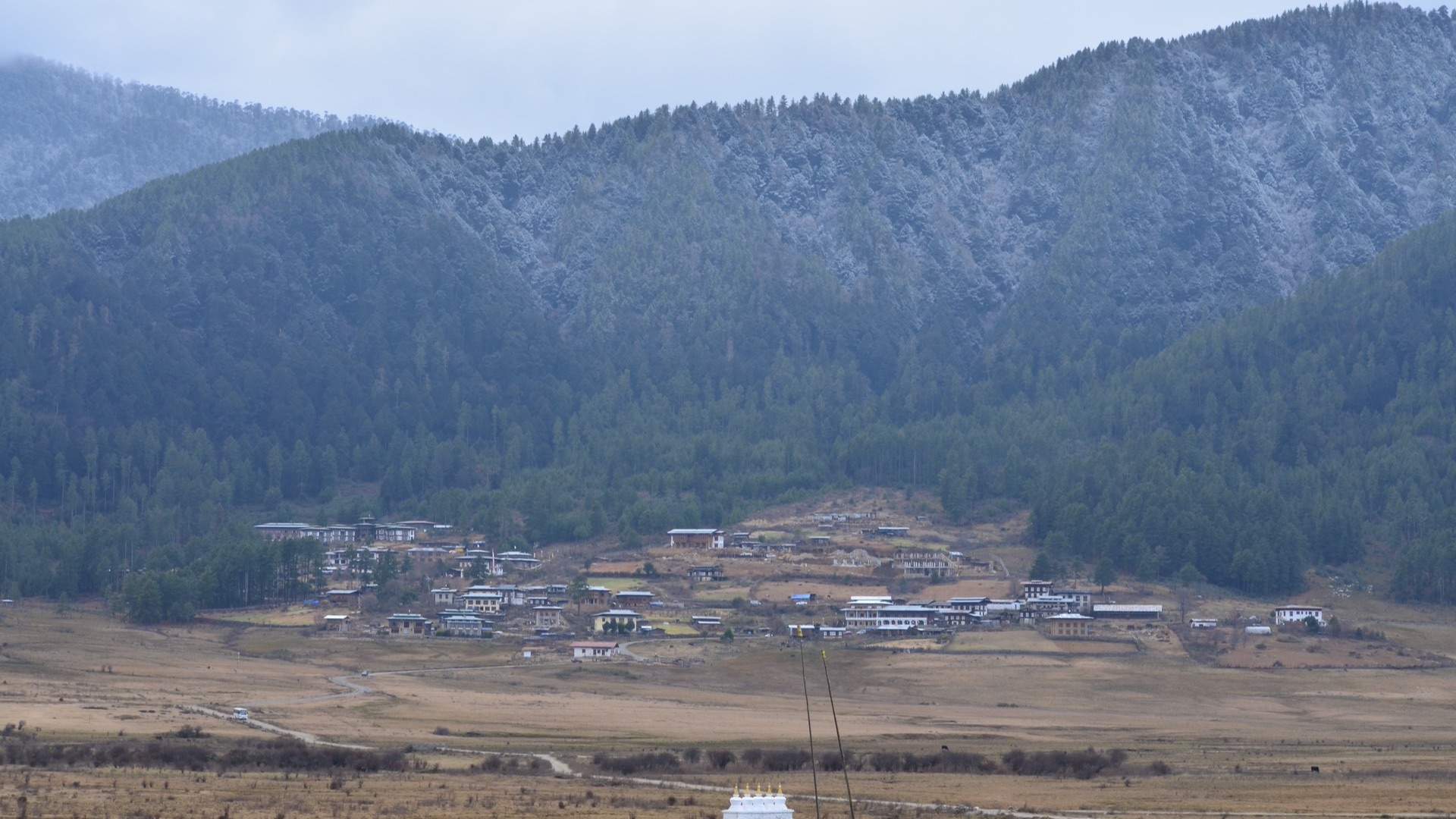Wangduephodrang
Wangduephodrang is at a distance of around 17 kms from Punakha and is the last town on the central highway before central Bhutan. The old town used to be a little more than an enlarged village with a few well- provided shops and hotels, however, the new town planning at Bajo and the Punatshangchhu Hydro Power Projects has taken Wangduephodrang to a different level. Till the year 2012, the Wangduephodrang Dzong used to be the town’s most visible feature, unfortunately the Dzong was destroyed by fire on 24th June 2012 which was a national tragedy and a huge loss to the nation. In the 17th century, Wangduephodrang played a critical role in unifying the western, central and southern Bhutanese districts. Located in the south of Punakha, the higher reaches of the Wangduephodrang valley provide rich pastureland for cattle. This district is also famous for its fine bamboo products, slate and stone carvings.
The famous Phobjikha and Gangtey Valley is in this district. It is about 68 Km from the main town. Phobjikha is the winter roosting place for endangered black necked crane and the valley is considered one of the most beautiful glacial valleys in the Himalayas.

Rinchengang Village
This is small and clustered valley located opposite to Wangduephodrang Dzong (The Dzong was destroyed by fire in the year 2012, and it is being rebuilt now). It is about 20 minutes hike uphill from the near road and the village is known for its skill in traditional method of stone masonry.

Phobjikha Valley
Lying at an altitude of 9840 feet, 68 km away from Wangdue Phodrang is the glacial valley of Phobjikha. It is located on the western slopes of the Black Mountain. Phobjikha is the winter home to the rare black-necked crane that migrate from high plateaus of Tibet in late fall to escape harsh winters. There are also muntjak (barking deer), wild boar, sambar, Himalayan black bear, leopard and red fox. The valley is a designated conservation area and borders Black Mountain National Park. The valley is said to be one of the most beautiful glacial valleys in the Himalayas.
Gangtey Goemba
This Monastery overlooks the large green expanse of the Phobjikha Valley. Gyaltse Pema Thinley, the grandson and mind reincarnation of Pema Lingpa founded the Temple in 1613, and Tenzin Legpai Dhendup, the second re-incarnation, built the temple. The present Abbot, Kunzang Pema Namgyal is the ninth re-incarnation. It is one of the largest Nyingma monastery in Bhutan.


Black Necked Crane Observation and Education Centre (RSPN centre)
The Centre was established by the Royal Society for Protection of Nature (RSPN), for observation and education of the black necked cranes. Activities within the Centre are; early morning crane observation and counting/ crane study using nature trails.
Exploring Villages
Exploring the untouched rural villages of Phobjikha can be very interesting and a life time’s experience. The hike can be scenic and mind soothing that would provide you with rewarding surprises.


